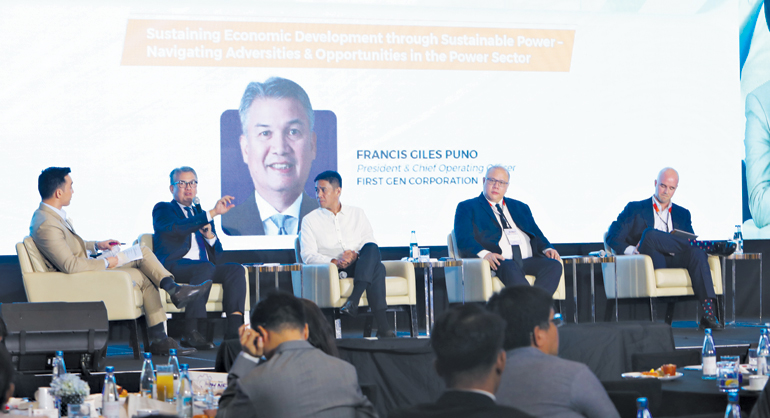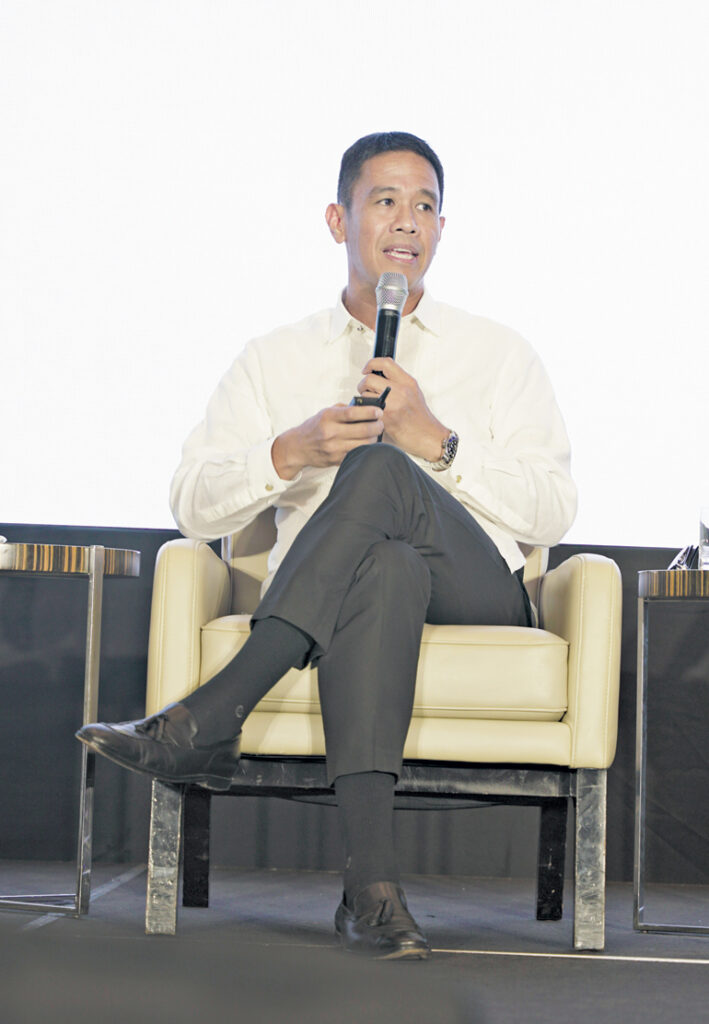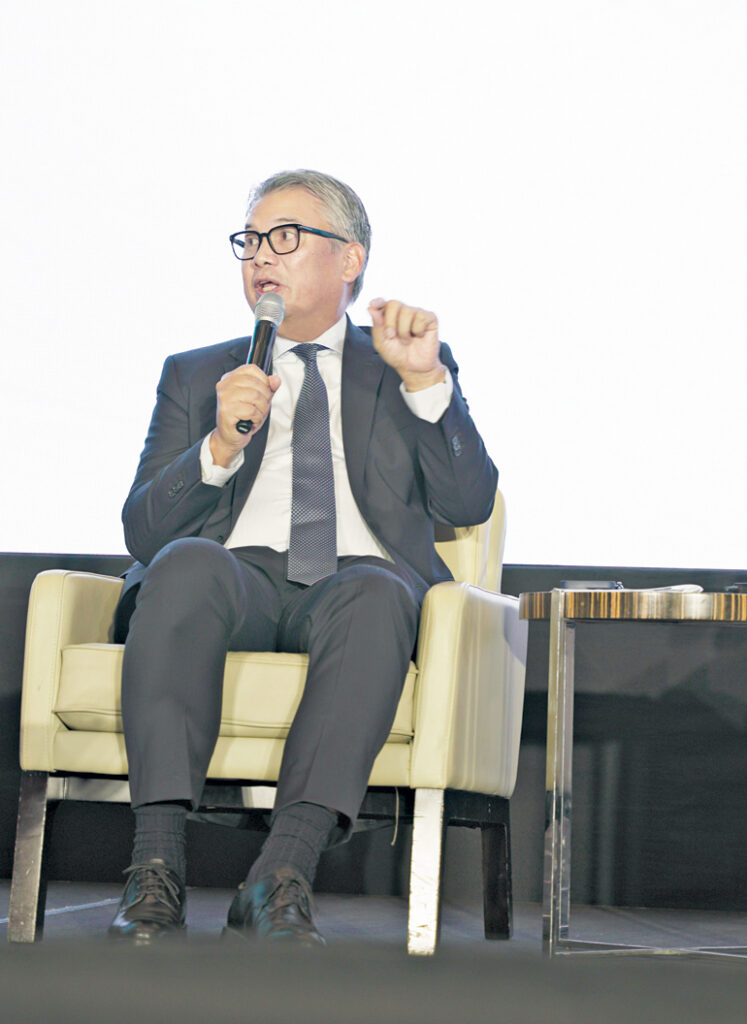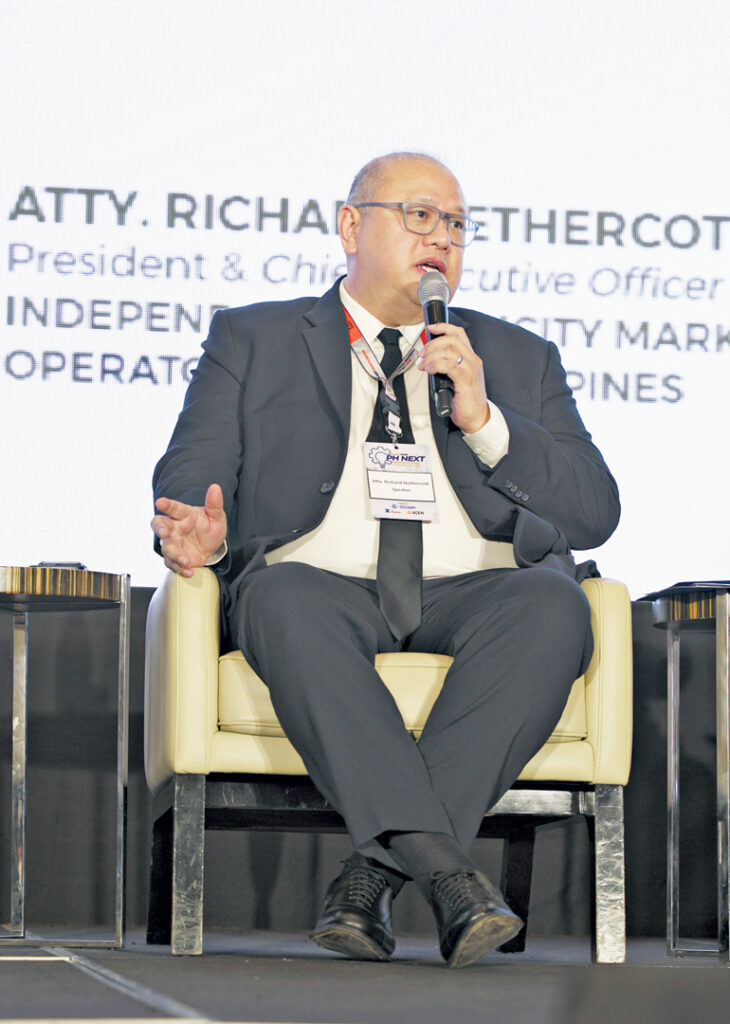Factoring the importance of sustainable power for economic development

By Mhicole A. Moral, Special Features and Content Writer
According to consulting firm giant McKinsey & Company, the Philippines is considered as the fastest-growing economy in 2023 across Southeast Asia with 5.6% growth rate. This year, it is predicted that the country will remain resilient despite global economic pressures.
The same report mentioned that the energy and power sector will serve as one of the key drivers in the country’s progress and development, with a potential to grow by 7% in 2024.
The recent BusinessWorld Economic Forum, held last May 22 at Grand Hyatt Manila, emphasized the contribution of sustainable power and renewable energy in the country’s economic development. A panel discussion highlighted the collaborative efforts of key industry players and their shared commitment to advancing sustainable and responsible practices in the country’s power sector.
In his opening statement, Francis Giles B. Puno, president and chief operating officer (CEO) of First Gen Corp., detailed their journey in pioneering investments in gas-fired power plants and later shifting focus towards renewable energy. He also highlighted their position as the largest producer of renewable energy in the Philippines, attributing much of this success to their geothermal plants, which provide a more reliable baseload power.
“It’s exciting for us because the market continues to grow. We’re now in a position where the narrative across ourselves, including our friendly competitors, is sort of converging, where we know there’s growth and a need for investments. Everyone knows that there’s a need to decarbonize and produce more electricity coming from cleaner and renewable energy sources,” Mr. Puno added.
Meralco Chief Sustainability Officer Raymond B. Ravelo said that renewable energy will be key not only to economic growth but to lasting sustainable progress.
Mr. Ravelo also emphasized the importance of social impact alongside decarbonization, noting that Meralco aims to leverage electricity to enhance education, water access, healthcare, and livelihood productivity in communities.

“[We] are very much aware that sustainability goes well beyond going green and decarbonizing. So, we’ve identified a number of social impact areas where we can use electricity as an enabler to power better lives for communities,” said the chief sustainability officer.
Jaime Z. Urquijo, chief sustainability and risk officer of Ayala Corp. and board director of ACEN, shared the impressive growth trajectory of ACEN, transforming from zero megawatts 15 years ago to five gigawatts of renewable energy capacity today. He also highlighted the significant opportunities in the Philippine energy sector, driven by the country’s growing economy.
“As we know, the Philippines is a growing economy, and a growing economy will always need a lot of energy, a lot of power. And so, the big decision now is how a lot of that new capacity is really going to be sort of built out,” said Mr. Urquijo.
ACEN aims to expand its capacity to 20 gigawatts by 2030, with a substantial portion of this growth occurring in the Philippines.
“If you look at the installed capacity that is going to be built out between 2022 and 2030, it’s about 17 gigawatts of solar and wind capacity. For us, we see that as an incredible opportunity; and ACEN is planning, of course, to participate in that,” he added.
The president and chief executive officer of the Independent Electricity Market Operator Philippines (IEMOP), Atty. Richard J. Nethercott, introduced the role of IEMOP in managing the Wholesale Electricity Spot Market (WESM) in the country.
“For last year, the average spot transaction, ranges around to roughly 18% of the total generation sold in the industry, was transacted through the WESM. IEMOP acts as the central registration body of our retail market,” he explained.
Atty. Nethercott also mentioned that IEMOP acts as the central body under programs like Retail Competition Open Access (RCOA) and the Green Energy Option Program (GEOP) to promote the purchase of renewable energy in the country.
Transition to renewables

Referencing the aim of the Department of Energy’s Philippine Energy Plan to increase the renewable energy’s share from 20% to 35%, and eventually to 50%, First Gen’s Mr. Puno said this transition requires support from gas-fired power plants.
“I think, in a way, the conclusion or the recommendation of the plan shows that gas has to keep up with the growth of renewable energy. So, the space that we play in is really in both areas. The question is: Can we live without gas? But, we are realizing that it’s probably almost impossible to live without the gas-fired [plants right now].”
First Gen has also been developing liquefied natural gas (LNG) facilities to replace depleting Malampaya gas reserves to ensure a reliable energy supply. Mr. Puno noted that geothermal energy’s ability to provide consistent power makes it an attractive option for consumers, especially those looking to green their supply chains.
Meanwhile, Meralco’s comprehensive sustainability strategy has emphasized its dual commitments to renewable energy.
“From a distribution standpoint, we’ve committed to securing 1,500 megawatts of renewable energy power supply contracts in the next five to seven years. On the flip side, from a generation standpoint, we’ve also committed to building 1,500 megawatts of attributable renewable energy capacity in this decade,” Mr. Ravelo announced. “I’m happy to share that we’ve actually overshot that commitment. As of today, we’ve already secured contracts in the order of about 1,800 megawatts. So that, in effect, is largely done. So, we’re trying to see if we can push that further, again, in support of the government’s renewable portfolio standards.”
Meralco is also focused on electrifying its entire franchise area, including remote and off-grid communities. Innovative solutions like sustainable microgrid systems, which combine solar power and battery storage, have been deployed in islands such as Cagbalete, Quezon and Isla Verde, Batangas.
On the other hand, Mr. Urquijo said that in addition to the actual renewable energy plants, the country’s infrastructure must support the growth of the renewable energy sector as projects usually take this into consideration.
“A lot of renewable energy plants are built in relatively inaccessible areas. And so, a lot of infrastructure has to come along to really support that growth, which we’re extremely excited about,” he added.
Currently, 80% of ACEN’s energy needs are met by renewable sources, and Mr. Urquijo expressed the company’s commitment to increasing this percentage across the portfolio of Ayala Corp.
Renewable energy industry evaluated

Atty. Nethercott described the current state of renewable energy in the Philippines as “very satisfactory to excellent,” while acknowledging the remaining significant challenges.
According to the IEMOP president, the government has set ambitious targets to increase the share of renewable energy to 35% by 2030 and 50% by 2040.
“The government, together with the private sector, is collectively doing what they can, not only to contribute and meet this target. It’s not only important from the point of view of sustainability, but we must also talk about security,” Atty. Nethercott explained.
However, he pointed out that the country’s energy mix is still heavily reliant on imported fuels, which account for 65%-70% of the supply.
Supporting this statement, Mr. Puno emphasized the massive scale of investment required to transition from non-renewable energy.
For instance, the intermittent nature of solar energy, which only operates at 17%-18% capacity due to factors like night-time and weather conditions, has been limiting the transition.
“You need five times the amount of solar just to have a chance of building and producing that same amount of coal,” Mr. Puno added.
Currently, 60% of the country’s energy comes from coal, so in order to achieve net-zero emissions by 2050, it will need to be replaced with renewable energy sources.
Meanwhile, Meralco’s chief sustainability officer identified three primary challenges in scaling renewable energy: economics, regulatory conditions, and technical difficulties.
“Fossil fuels still provide reliable and affordable baseload power today. For [renewable energy] to be dispatchable, for them to be able to provide 24/7 power, we would need to attach certain technologies, such as battery energy storage technologies, which are very expensive,” Mr. Ravelo noted.
Additionally, renewable energy plants require significantly more real estate compared to fossil fuel plants, adding another layer of complexity to their deployment.
“Each of these challenges must be carefully studied and addressed to enable widespread adoption of renewable energy,” said Mr. Ravelo.
He also highlighted the need for significant investments in the grid to manage the intermittent energy from renewable sources. Regulatory conditions, such as the least cost mandate for electricity suppliers, pose another challenge.
The discussion further delved into the need for a regulatory environment that empowers consumers.
Mr. Puno referenced the Electric Power Industry Reform Act (EPIRA) of 2001, emphasizing its intent to deregulate the energy market and provide consumers with more choices.
“What we’d like to see is really for the law to be implemented the way it was envisioned as it was passed 23 years ago. Meaning to say, if I was a consumer, I’d like to be given the choice to where I source my power from,” he explained. “So that if I want to buy from coal, [it’s] fine. But if I want to buy from cleaner renewable sources, then I have that choice.”
He also pointed out that while large industrial users benefit from competitive electricity prices due to market demand, residential consumers often remain a “captured market” with limited options.
Progress and opportunities
According to the panelists, the growth and progress of the renewable energy sector lies in the financial, technological, and regulatory aspects.
“During COVID, we recrafted our mission, and that mission is to forge collaborative pathways towards a decarbonized and regenerative future,” Mr. Puno said. “A regenerative future is an escalated definition of what sustainability is. And so, what we have to do as a country is really approach it, we think, from that perspective. For us, it means a lot of collaboration. It needs a lot of investment [and] a lot of effort. We can start off with existing laws.”
Mr. Urquijo highlighted the immense potential in the renewable energy sector, particularly with the Department of Energy’s plans to add 17 gigawatts of solar and wind capacity by 2030.

“I think, just really echoing this incredible opportunity that’s in front of us, we see that as an incredibly exciting opportunity to be involved in,” he mentioned.
In addition, Meralco’s efforts to expand renewable energy capacity, including the construction of the world’s largest solar facility, highlights the company’s thrust to economic development and sustainable power.
The Meralco chief officer also stressed the importance of partnerships in achieving sustainability goals.
“We have four Ps to our sustainability agenda: power, planet, people, and prosperity. But really, all of this will not stick if there’s no partnership,” Mr. Ravelo said.
Atty. Nethercott emphasized that the sector is not suffering from a lack of interest but rather faces several challenges.
“There’s interest investments in RE (renewable energy). However, it requires a lot of money. Renewable energy is technology-driven and technology needs capital for it to be introduced in the country,” he said.
The IEMOP president also pointed out the importance of collective responsibility to achieve the goal of affordable and clean energy.
“Of course, stakeholder commitment. You cannot talk of sustainability without mentioning the concept of stewardship. All of us are stewards of our one and only planet. And so, we all must be responsible stakeholders to reach the commitment that we have made to make available, affordable, clean energy.”



